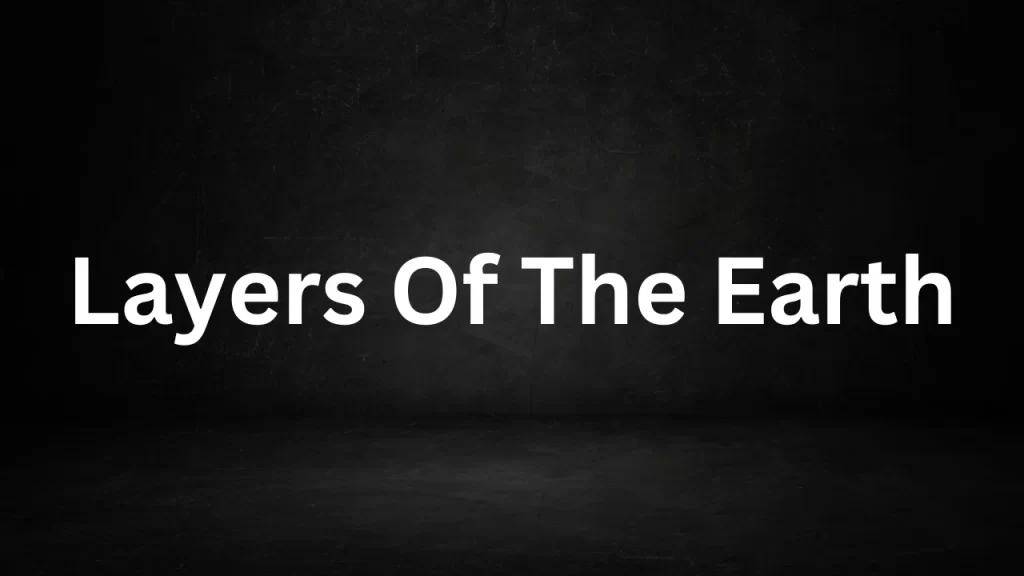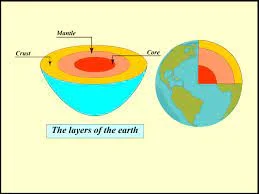Tag: drawing of layers of atmosphere
Layers Of The Earth
Layers of the Earth:The Earth, our home and a planet of immense beauty, harbors secrets beneath its surface that are as intriguing as the landscapes we see above ground. As we embark on a journey to explore the layers of the Earth, we’ll uncover the mysteries hidden beneath our feet and gain a deeper understanding of the geological forces that shape our world.

Layers Of The Earth:A Journey to the Center of Our Planet
1. The Crust: Earth’s Outer Shell
The Earth’s outermost layer is known as the crust. It’s the thinnest of all the Earth’s layers, making up just a tiny fraction of the planet’s total volume. Beneath our oceans, the crust is relatively thin, about 3 to 5 miles (5 to 8 kilometers) thick, while beneath the continents, it’s significantly thicker, ranging from 20 to 30 miles (30 to 50 kilometers). The crust is where we find the diverse landscapes, continents, and the ocean floors.
2. The Mantle: A Region of Heat and Movement
Beneath the crust lies the mantle, which extends to a depth of about 1,800 miles (2,900 kilometers). The mantle is primarily composed of solid rock, but it behaves like a slow-moving, viscous fluid over geological timescales. Convection currents in the mantle are responsible for the movement of tectonic plates on the Earth’s surface, which leads to the formation of mountains, earthquakes, and volcanoes.
3. The Outer Core: A Molten Sea of Iron and Nickel
Beneath the mantle, we encounter the outer core, a region composed of liquid iron and nickel. This molten layer is responsible for generating the Earth’s magnetic field through a process called the geodynamo effect. It extends from a depth of about 1,800 miles (2,900 kilometers) to 3,700 miles (5,950 kilometers).
4. The Inner Core: Earth’s Solid, Superheated Heart
At the Earth’s center lies the inner core, which extends from a depth of 3,700 miles (5,950 kilometers) to the very center of the planet, approximately 4,000 miles (6,400 kilometers) down. Despite the extreme pressure, the inner core is solid, primarily composed of iron and nickel, with temperatures reaching up to 9,000 degrees Fahrenheit (5,000 degrees Celsius) — hotter than the surface of the sun!

Why Do These Layers Matter?
Understanding the layers of the Earth is fundamental to comprehending the planet’s geological processes and phenomena. Here are some key reasons why these layers matter:
- Tectonic Plate Movement: The movement of tectonic plates, which float on the semi-fluid asthenosphere of the upper mantle, is responsible for earthquakes, mountain formation, and the shifting of continents.
- Magnetic Field Generation: The molten iron in the outer core generates the Earth’s magnetic field, which protects our planet from harmful solar radiation and guides migratory animals.
- Earth’s History: The study of Earth’s layers helps scientists unravel the planet’s geological history, including the formation of continents, oceans, and the evolution of life.
- Natural Resources: Knowledge of Earth’s interior aids in the exploration and extraction of valuable resources such as minerals, oil, and natural gas.
- Volcanoes and Earthquakes: The understanding of the mantle and core’s composition and behavior helps predict volcanic eruptions and seismic activity, contributing to public safety.
In conclusion, the Earth’s layers are a testament to the complexity and wonder of our planet. As we explore the depths of our world, we gain insight into the forces that have shaped its past and continue to mold its future. These layers remind us that there is still much to discover and learn about the remarkable planet we call home.
Read More
- Environmental Pollution And Recycle
- Batteries In Series Parallel
- Difference Between Work And Energy
- Difference Between Concave Convex Lens
- Difference Between Electric Field And Magnetic Field
Frequently Asked Questions (FAQs) Layers Of The Earth
1. How many layers does the Earth have, and what are they called?
The Earth has four main layers:
- Crust: The outermost layer.
- Mantle: Located beneath the crust.
- Outer Core: Lies beneath the mantle.
- Inner Core: At the Earth’s center.
2. What is the Earth’s crust made of?
The Earth’s crust is primarily composed of solid rock. It consists of a variety of minerals, including silicates, oxides, and carbonates.
3. How thick is the Earth’s crust?
The thickness of the Earth’s crust varies depending on whether it’s under the oceans or continents. Oceanic crust is relatively thin, about 3 to 5 miles (5 to 8 kilometers), while continental crust is thicker, ranging from 20 to 30 miles (30 to 50 kilometers).
4. What is the main component of the Earth’s mantle?
The Earth’s mantle is primarily composed of solid rock, mainly silicate minerals like olivine and pyroxene. It behaves like a slow-moving, viscous fluid over geological timescales.
5. How does the mantle contribute to plate tectonics?
The mantle’s convective currents are responsible for the movement of tectonic plates on the Earth’s surface. This movement leads to the formation of mountains, earthquakes, and volcanoes.